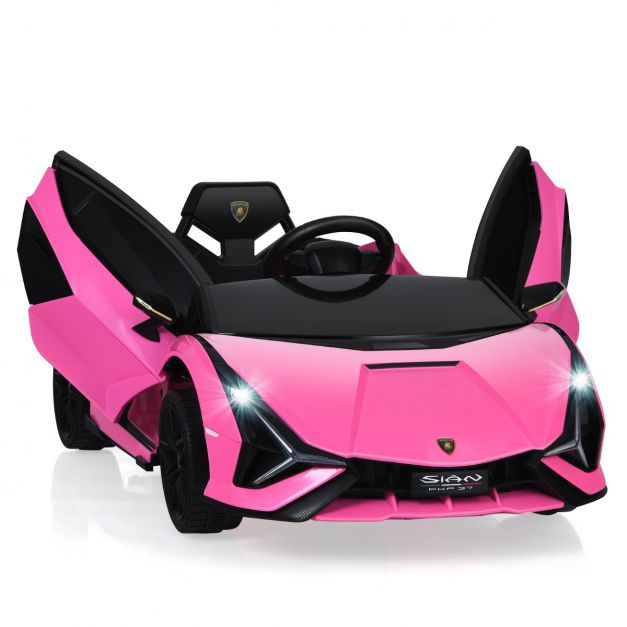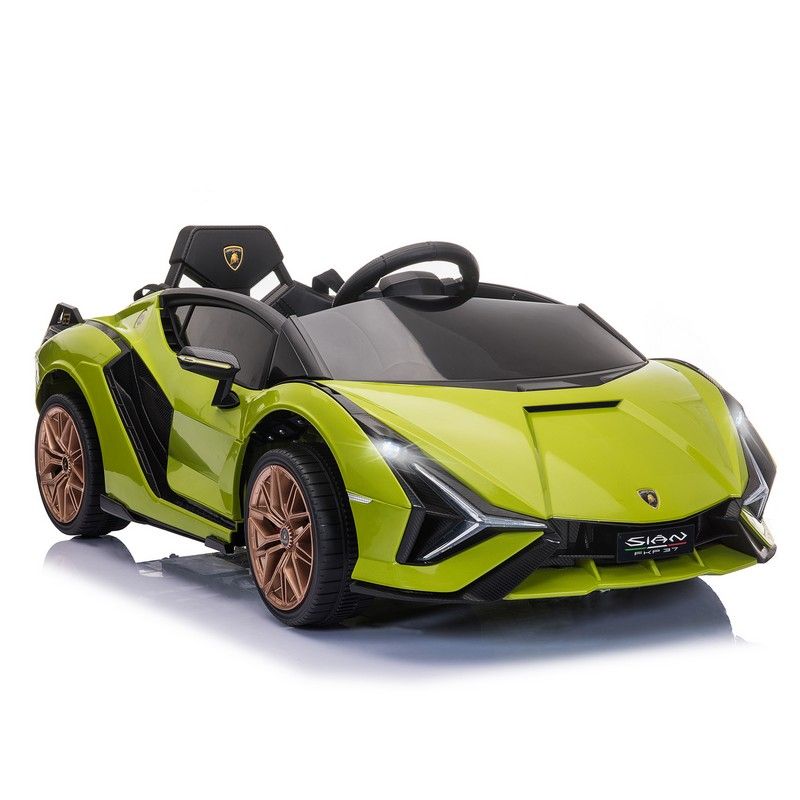Excellent Ideas On Deciding On Kids Ride On Cars
Wiki Article
What's The Battery Life Of An Electric Ride-On Car For Kids?
It is crucial to know the life span of your battery for the electric ride-on car for children and how long it takes to recharge. This will ensure that you get uninterrupted playtime. Here's the essential information you require to know: Type of Battery
Most electric ride-on cars for kids use rechargeable batteries, which are typically lithium-ion or lead acid batteries. Lithium-ion batteries usually have a longer battery lifespan and quicker charging times compared to lead-acid batteries.
Capacity of Battery -
The capacity of a battery is measured in amp hours (Ah) and watt hours (Wh). This is how long a ride-on can run on a single charging. High capacity batteries allow for longer playtime without requiring recharge.
Run Time -
The run-time of an electric ride-on car is how long it can operate continuously with a single charge. The running time of an electric ride-on vehicle can vary based on factors like the battery capacity and the motor's power. It is also dependent on the terrain and the user's weight.
The typical time to run electric ride-on vehicles ranges from 30 minutes and 2 hours. Some high-capacity battery packs may have longer time-to-run.
Charge Time
Charging time refers to the amount of time needed for batteries to be fully charged after it has been exhausted. Charge times differ according to battery capacity, charger specs, and the charging method.
The charging time for electric ride-on cars range from 8 to 12 hours for a full charge. Some models might have faster charging times, specifically equipped with lithium-ion batteries.
The battery's safety and lifespan can be ensured by adhering to the manufacturer's charging recommendations. The battery's performance may be negatively affected when the battery is charged too high or is undercharged.
Charge Method Charge Method
Electric ride on cars are often equipped with chargers which plug into a standard home outlet. Certain models provide rapid charging or come with a clever charger that regulates the rate at which a battery is charged.
To avoid any harm to the electrical system or battery make sure that the charger and port are compatible with chargers supplied with your ride-on vehicle.
Additional Batteries
Some electric ride on cars offer the option of purchasing additional batteries or batteries to prolong the playtime. Batteries that are extra allow you to replace batteries that are exhausted with fully charged batteries, which can reduce downtime.
Knowing the battery life of your electronic kids' ride-on car as well as its charging time will allow you to ensure that your child has thrilling and enjoyable adventures while exploring their world. It is crucial to recharge the battery as frequently as is possible and follow the proper charging practices. This will maximize battery performance. View the top McLaren kids car for site recommendations including riding digger, remote control childrens car, digger ride, ride a toy, toy car toy car, kiddies cars, ride ons, toy and car, ride on car, lambo toy car and more. .

What Are The Main Features Of The Ride On Car?
There are numerous features included in ride-on vehicles. These include accessories and features that enhance the experience and realistic for children. Here are a few of the most popular features and accessories available to ride-on vehicles: – Working headlights
Many ride on cars have working headlights to illuminate the way ahead. This increases visibility and realism, especially in areas with low illumination or at night.
Horn Sounds
Ride-on vehicles often have the horn button or steering wheel that emits sounds of horn when pressed, allowing children to alert others and make it appear as if they're driving real car.
MP3 Player compatibility -
Certain ride-on vehicles can be used with MP3 players, allowing kids to connect their mobile devices through USB or an auxiliary input. This allows them to listen to their preferred songs while driving. This increases the value of the ride-on car.
Realistic Engine Noises -
The sound effects of a ride-on car can be built in to simulate real engine sounds.
Remote Control
Certain ride-on cars come with a parental remote control that allows parents to operate the car remotely, providing supervision and assistance as needed. Parents can steer their ride-on car, control the speed of it, and even stop it from a distance. This allows them to feel secure and safe.
Seat Belts -
The majority of ride-ons are equipped with safety harnesses and seat belts that help keep children safe in the car. This provides an extra layer of safety and can to prevent them from falling when playing.
Doors for Working
Many ride-on vehicles come with functional doors which can be closed and opened. This makes it easier for children to get into the vehicle and leave, and enhances the driving experience.
Storage Compartment
Some of the ride-on cars have the option of a trunk or storage compartment where children can store small toys and snacks as well as other things, adding convenience and flexibility to the playing experience.
Adjustable Seats -
Certain ride-on vehicles have seats that are adjustable, and can be moved forwards or backwards in order to accommodate children of different heights or allow for more legroom when they increase in height.
Remote Emergency Stop Buttons -
Alongside the remote control certain rides on vehicles also have a remote-controlled emergency stop button. Parents can use this feature to stop their car in the event of an emergency or in danger.
These features and accessories add to the overall excitement as well as the realism and safety of ride-on vehicles, allowing children to engage in imaginative play and engage in enjoyable adventures while driving their own vehicle. See the most popular JCB ride on digger for more examples including car on ride, digger ride, pedal car, car on ride, toy and car, toy car, childs car toy, riding digger, electric rideons, toy the car and more. .

What Are The Remote Controls For Kids' Cars? Pros And Cons?
Remote-controlled vehicles for children, also known as RC cars, are offered in a range of styles, sizes and prices that can accommodate different budgets and needs. Here's an overview of the varieties, sizes, costs along with pros and cons of remote controlled children's vehicles The types of remote control Children's Cars -
Electric RC Cars - Battery-powered remote-controlled cars that are suitable for outdoor and indoor use. They are available in many designs, such as buggies, trucks and sports cars.
Nitro RC Cars – Gas powered remote controlled vehicles that provide better performance, but require greater maintenance. They're generally bigger and more costly than electric RC cars.
Scale Models are remote controlled replicas that include trucks, cars and aircrafts. Scale models can be found in various sizes, ranging from 1-10 to 1-24. The larger scales offer greater detail and realism.
Sizes -
Remote-controlled cars for kids are available in various sizes. From miniature to full-scale replicas, they come in a variety of dimensions and shapes. The size can affect the performance of a car as well as its speed and its handling characteristics.
Micro-sized cars are light and compact. They're ideal for young children and indoor use. Larger-scale models have more power and durability, making them ideal for outdoor racing and off-road driving.
Prices
Prices for remote-controlled kids' cars can vary depending on specifications, quality, and brand.
Small electric RC cars vary from $20 to $100 The larger-scale nitro and electric cars can range from $100 to $500 or more.
Models and top-of-the-line hobby RC automobiles cost anywhere from a few hundred dollars to over 1000 dollars, based on the degree of detail.
What are the pros and cons?
Pros -
Entertainment - Remote control for children's vehicles can offer hours of excitement and enjoyment for both children and adults.
Running an R/C car can help children to develop spatial awareness, problem solving and hand-eye cooperation.
Social Interaction RC cars can be played by friends and families, encouraging social interaction and collaboration.
Aftermarket parts, upgrades, accessories and other items from the aftermarket can be used to customize many RC vehicles and enhance their performance.
Cons
Cost - High-quality remote control cars for children can be costly, especially hobby-grade models with sophisticated features.
Learning Curve - Controlling an RC car requires practice and skill, and younger children might struggle with the controls in the beginning.
Maintenance - Regular maintenance is required for RC vehicles like cleaning, lubrication, and repairs.
Safety Concerns Safety Issues RC vehicles can be dangerous in the event that they aren't operated responsibly under adult supervision. They could result in accidents, falls and electrical dangers.
Overall, remote control children's cars offer a thrilling as well as educational experience for children of all ages, however it's essential to consider things like the size, price, features, and safety when selecting the best model for your child. Hobby-grade RC cars are suitable for older children and enthusiasts, while simpler models are suitable for younger youngsters and those who are just beginning. Have a look at the best remote control childrens cars kidscars.co.uk advice for more advice including two seater childrens electric cars, toy ride, electric two seater cars, childs ride on car, ride on toy, toy car for car, ride ons, riding digger, ride ons, electric toy car and more. .
